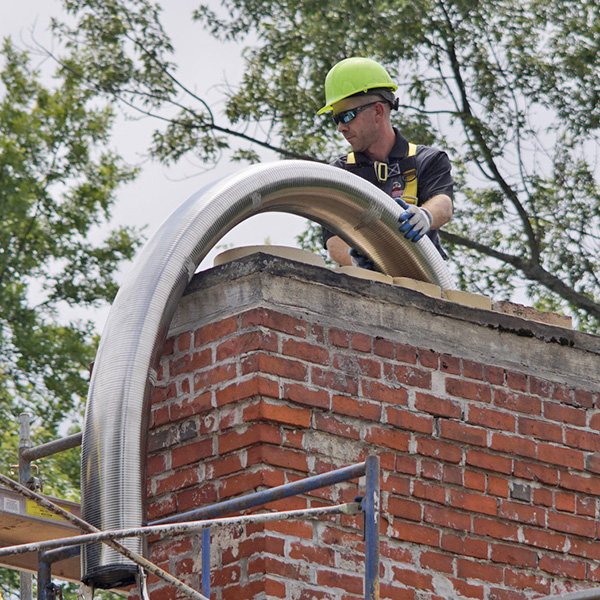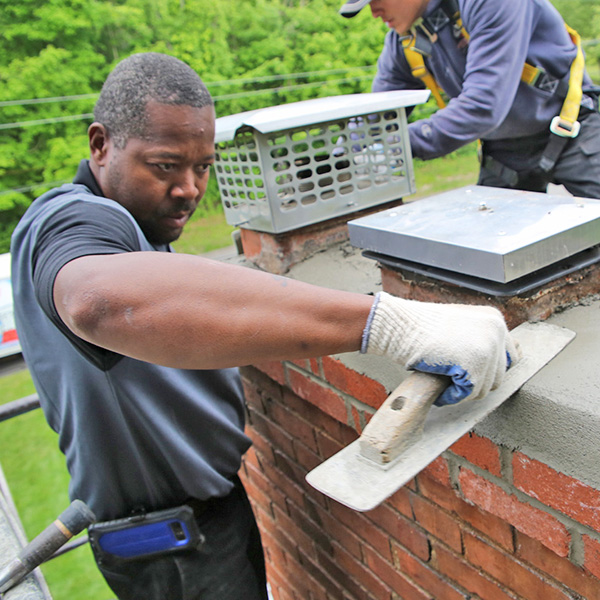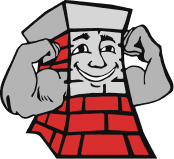Understanding Your Chimney’s Protective Components
Within your chimney system are a number of protective components whose job it is to allow for efficient operation and keep your home safe. Let’s look at some of these components and see why they’re so important.
The chimney itself (flue)
Without a tall, properly built chimney, there would be no way to channel smoke from your fireplace to the outside air. In this sense, your chimney is functional. But it’s also protective.
The heavy masonry from which the chimney is constructed provides a layer of protection between the intense heat from fires and nearby combustible materials within your home. When chimney masonry is damaged, often by water, it can begin to crumble and crack, leaving adjacent walls and/or ceilings vulnerable.
 Chimney liner
Chimney liner
At one point in the history of chimneys, somebody got the bright idea that the masonry could hold up longer and better if there was some kind of liner inside the flue. Today, stainless steel, clay tile and poured-in-place chimney liners are found in many chimneys. Liners do add a strong layer of protection, but like the masonry, they can become split or broken over time. If this happens and repairs aren’t made promptly, it’s like not having a liner at all.
Chimney cap
At the top of your chimney, there is a chimney cap. Well, there should be a chimney cap. Not all chimneys have caps, but all of them should, because caps offer powerful protection against rain and snow infiltration. Moisture inside the chimney flue is one of the primary reasons for damage to masonry and other components. Additionally, chimney caps prevent tree debris, small animals and other unwanteds from getting into the flue.
 Chimney crown
Chimney crown
The cement layer covering the top opening of the chimney is the crown. Chimney crowns add another layer of protection by blocking everything except the flue openings. Crowns are designed to allow water to run off and away from them and away from the exterior masonry beneath them. Cracks and decay in a crown will worsen and leave the flue and bricks vulnerable to serious damage.
Flashing
Roof flashing is the protective material that forms a seal over the gap between your roof and the outside of the chimney. Warped or damaged flashing provides a clear path for rainwater and melting snow to flow down the exterior of the chimney and do damage to not only the masonry but adjacent walls, ceilings, floors and other parts of the home.
Damper
The fireplace damper is located above the firebox and is designed to open fully and close fully. When a fire is burning, it should be open. When the fireplace isn’t being used, it should be closed. Over time, dampers can become rusted or warped to the extent they won’t open all the way or close with a tight seal. A damaged damper can cause problems with exhaust and let cold air flow into your home.
The easiest way to ensure that all your chimney’s protective components are doing their job is with an annual chimney/fireplace inspection by certified technicians. Northeastern Chimney of West Hartford, CT, provides full-service chimney inspection, chimney cleaning and chimney repair by CSIA-certified experts. Make sure your chimney stays safe year-round by calling (860) 233-5770.


